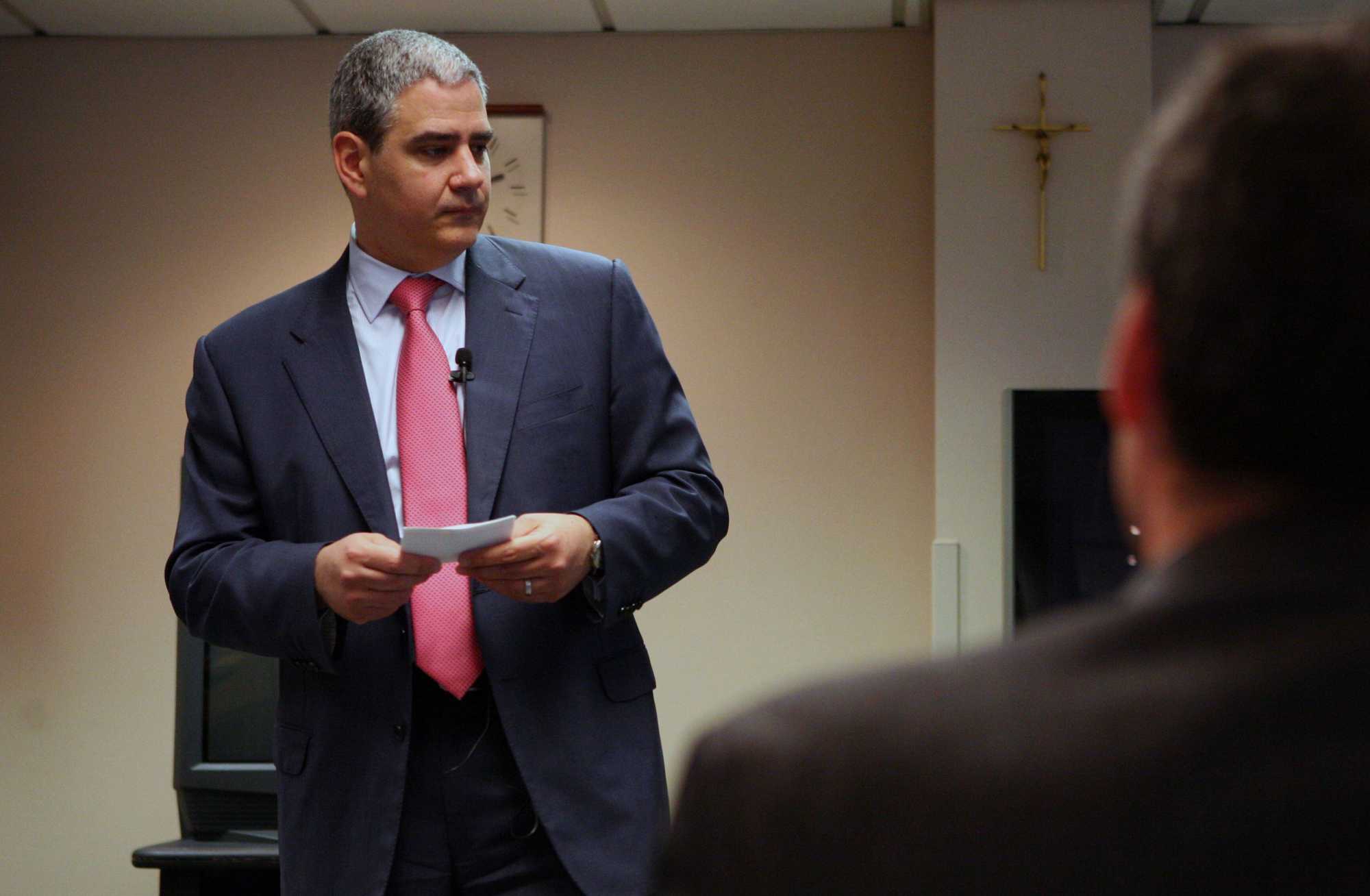
Dr. Ralph de la Torre, then CEO of Caritas Christi Health Care, met with Norwood Hospital employees in March 2010 to discuss a proposed buyout by Cerberus Capital Management, a New York-based private equity firm. (Wendy Maeda/Globe Staff)
Turning patients into profit: How Steward embodies the risk of private equity’s push in American health care.
Nearly 75 years ago, more than 6,000 people gathered on a Methuen hilltop, under dark skies and in a persistent drizzle. They held umbrellas or newspapers over their heads, and jockeyed for a spot to witness this grand opening.
The dedication of a new Catholic hospital, paid for by donations from the “rank and file,” as their archbishop noted, was a momentous leap for their community.
Nancy Glynn, 13, sensed the magnitude of the moment. The schoolgirl was among the thousands who strolled through the hospital’s open house that September day in 1950. Floors gleamed. New equipment sparkled. Nuns in all-white habits stood sentry at front-line medical posts.
A fund-raising drive, endorsed by the Boston Archdiocese in 1944, had brought in the dizzying sum of $1 million to stand up the sprawling four-story brick-and-mortar building. Businesses gave thousands; working people gave a dollar or two, whatever they could spare. Three years into World War II, people understood sacrifice for the greater good.
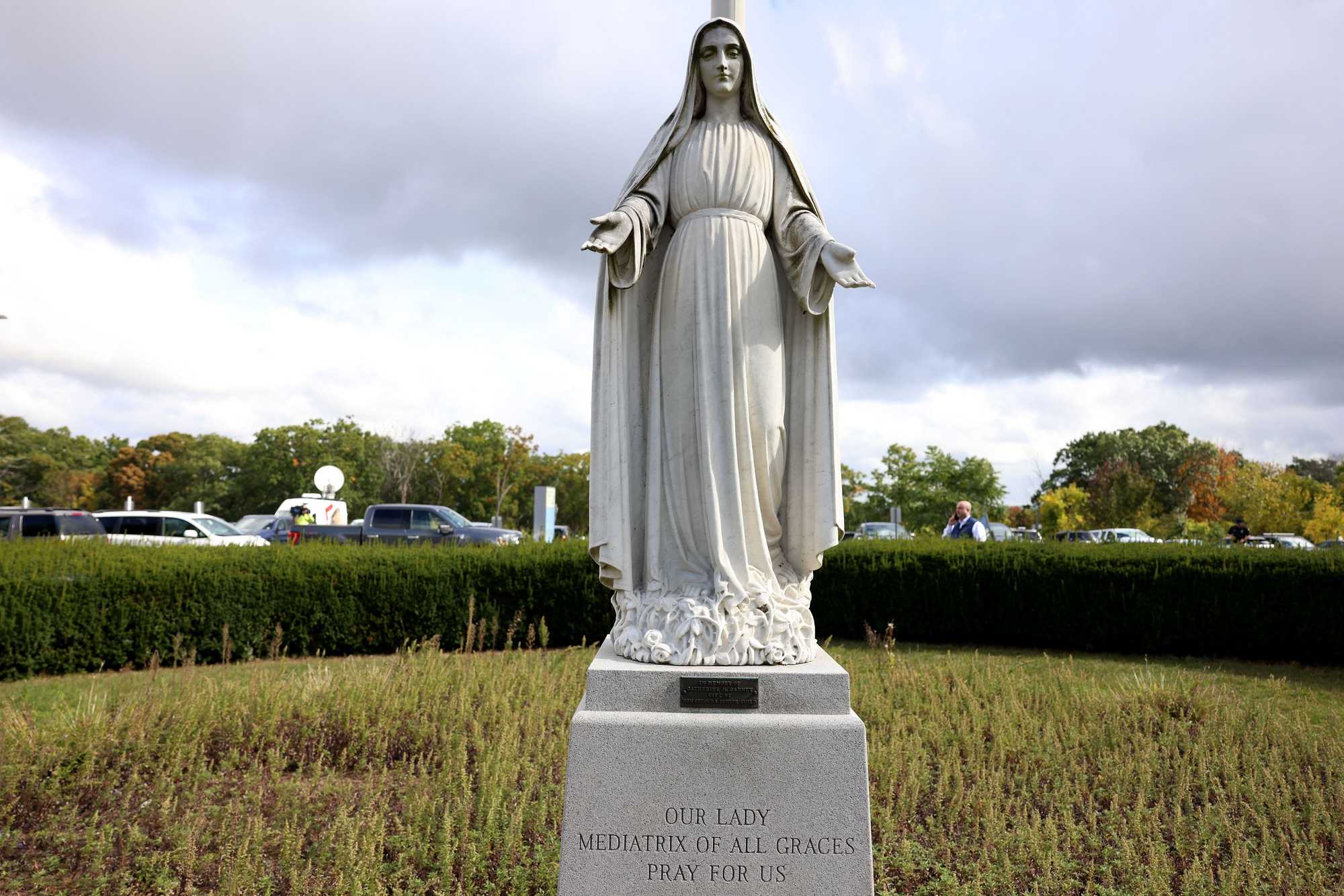
A statue of the Virgin Mary stood outside of Holy Family Hospital in Methuen in October 2024. The hospital, once part of Steward Health Care, has been taken over by Lawrence General Hospital. (Jessica Rinaldi/Globe Staff)
A submarine officer from Lawrence sent a $25 check and a letter written in the waters near Okinawa. “I, and the submarine in which I have served, have caused so much destruction in this war that it does my soul good to be able to help construct something.”
Amid this upswell of goodwill and hope, Glynn, the teen from Lawrence, found a calling for service for the sick and needy.
Explore more
- Death, indignity, despair: The human cost of Steward’s neglect
- How Steward’s CEO used corporate funds as the company crumbled
- Meet the corporate board that OK’d many of de la Torre's decisions
- Steward raided the coffers of its in-house malpractice insurer
- How state officials enabled Steward’s rise and fall
She returned to the hospital in high school to work as a candystriper. She came back after that, for a job as a physical therapist. She so admired the sisters who ran the place and for whom the hospital was originally named that she joined the order.
“What drew me to the Sisters of Bon Secours was they were very human, very down to earth,” Sister Glynn, 87, said recently. “And also the fact that it was a health care community. I knew that I wanted to work in health care.”
The hospital was not merely an asset to the sisters: It was the work of their lives, their reason to be. They not only served at the hospital, they lived in a convent next door. They took winter toboggan rides on the property’s steep grounds. And when they grew old and died, they were buried there, in a cemetery behind the convent.
Holy Family Hospital’s stirring origin story makes its tribulations in recent years all the more devastating. Sold off to a private equity firm and repackaged as a part of the for-profit Steward Health Care chain, this vital public asset — and many others like it — became a victim of Steward’s financial meltdown, which serves today as a warning about what can happen when profit imperative collides with the values and interests of a community.
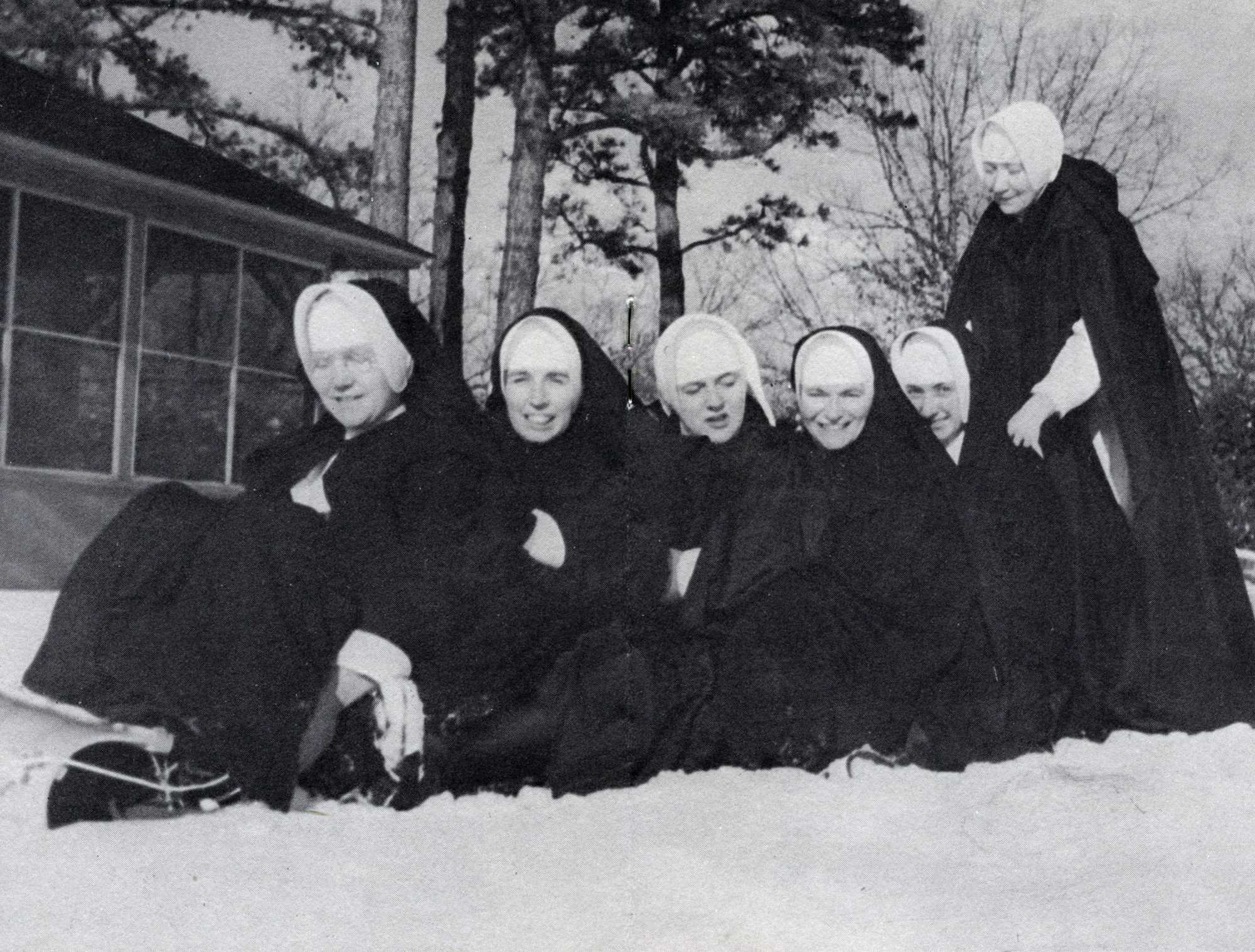
Sisters of Bon Secours assigned to what is now Holy Family Hospital in Methuen enjoying winter sledding in a photograph from the mid-1960s. Courtesy of the Sisters of Bon Secours.
The rise and fall of Steward tracks a surge in private equity into all sectors of US health care in the wake of the 2010 Affordable Care Act. The annual value of private equity health care deals roughly tripled over the 2010s, reaching $120 billion by 2019, according to experts. Today, private equity firms own around 460 US hospitals, about 8 percent of all private hospitals and 22 percent of all for-profit hospitals, according to the nonprofit Private Equity Stakeholder Project.
At its peak, Steward, with more than 30 hospitals, was a significant slice of that pie. Private equity deals are often pitched as the last chance to save struggling hospitals. Sometimes they do. In other cases, hospital systems have been stripped of assets and neglected while executives and investors reap huge payouts.
Today, Steward is under scrutiny in several ways, including bankruptcy court, where the carcass of the company — $9 billion in debt — is being picked over. And in federal district court, where prosecutors are digging into allegations of financial mismanagement that hastened the company’s collapse.
In Massachusetts, taxpayers are bracing for a $700 million bill to rescue several Steward hospitals, from the same government that permitted this to happen. A Steward spokeswoman said the company declined to comment.
Early this year, the Globe Spotlight Team set out to examine what went wrong in this once-promising, Boston-born hospital chain. The scenes and revelations in this story are drawn from eight months of reporting and more than 100 interviews, including first-hand accounts from key Steward insiders who witnessed, and at times enabled, the company’s downfall. The account also relies on tens of thousands of internal company emails obtained by the Organized Crime and Corruption Reporting Project and shared with the Globe.
What’s emerged is a cautionary tale about letting a wannabe billionaire, a titan of private equity, and a real estate investment trust become stewards of a public necessity like health care. It is about how they took a business dedicated to serving patients, and by their own account, turned it into a business for finance and investing. And it is about how everyone, so far, has gotten away with it.
Advertisement
In the decades following its grand opening, Holy Family suffered a series of indignities, each worse than the one before it. In the 1980s, it was subsumed into the Boston archdiocese’s hospital network, Caritas Christi Health Care, to the dismay of the sisters. They left Methuen in 1988, taking the Bon Secours name and the bones of their departed sisters from the hospital grounds, exhumed to be reburied near their US headquarters in Maryland.
As the archdiocese’s finances grew shaky in the years after the child sex abuse crisis, the six hospitals of its Caritas chain operated on thin budgets.
“The financial challenges were front and center,” recalled Helen Drinan, Caritas’s former human resources chief who worked there in the 2000s.
In 2008, the Caritas board took a big swing at new leadership, hiring a CEO with zeal and intellect, but zero experience running a hospital. Ralph de la Torre was an accomplished heart surgeon, who swaggered into Caritas like a savior in a white lab coat, with a CV chockablock with elite institutions: schooling at Duke University, Harvard Medical School, and MIT; training at Massachusetts General Hospital. He had worked at Boston Medical Center and founded a cardiovascular institute at Beth Israel Deaconess Medical Center.
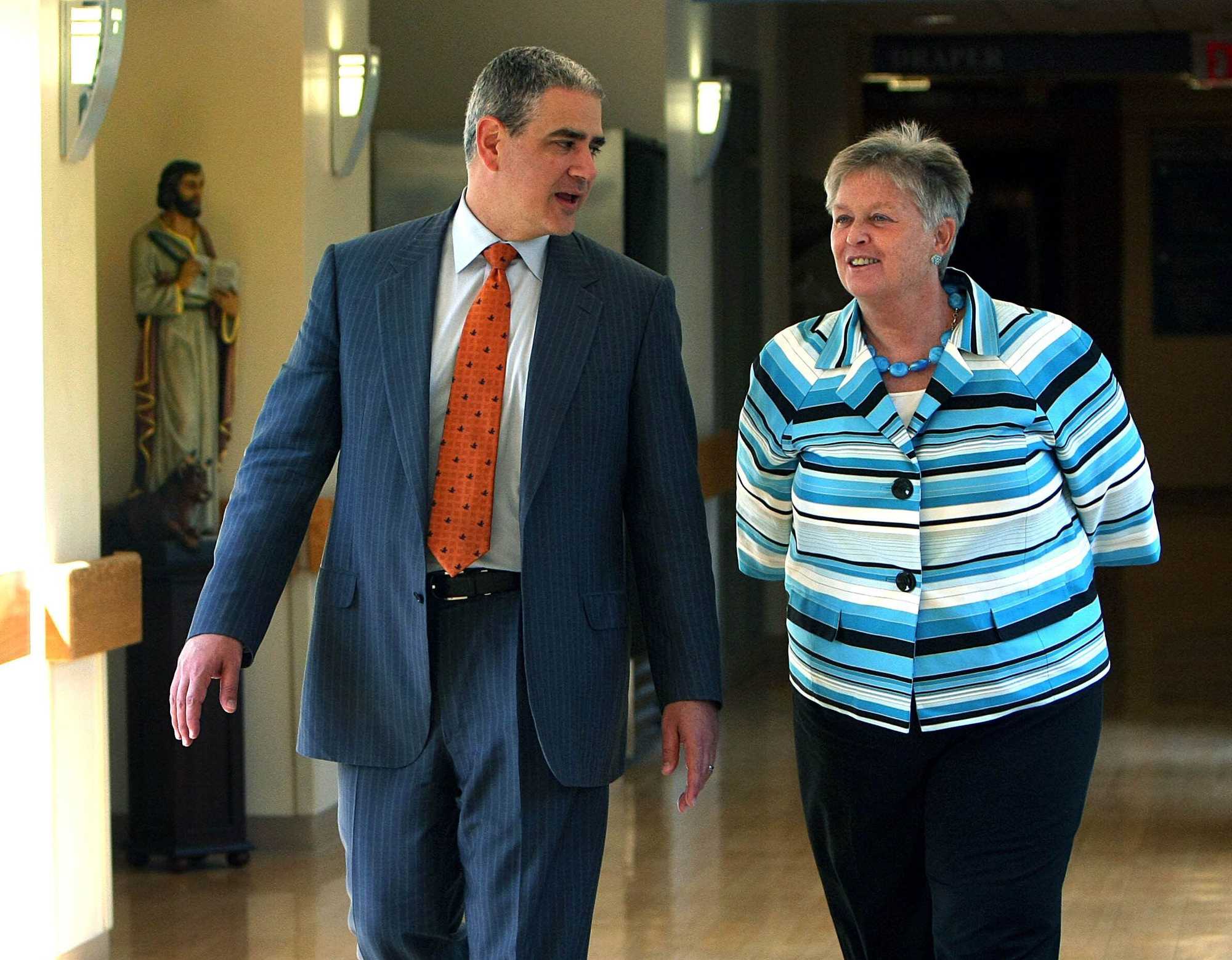
Dr. Ralph de la Torre, then CEO of Caritas Christi Health Care, talked with Norwood Hospital President Margaret Hanson as they walked to a meeting in 2009. Behind them is a statue of St. Luke, the patron saint of doctors. (John Tlumacki/Globe staff)
He also sought personal wealth and power, and exhibited “an unhealthy desire to win at all cost,” as a former colleague put it to the Globe. Several company insiders said De la Torre was often heard to remark: If I’m not a billionaire by the time I’m 50, my life will be a failure.
In response to questions from the Globe, a spokesman for de la Torre released the following statement:
“Dr. de la Torre cannot control what people think they hear. That said, throughout his career, Dr. de la Torre’s mission has been to expand access to high-quality care for underserved communities. You need to look no further than his advocacy for Carney and Saint Joseph’s Medical Center despite their monumental losses.”
When de la Torre took command, the shopworn Caritas hospitals were overshadowed by Boston’s big teaching hospitals, and generally served a less affluent population. But the chain was a vital part of the region’s health care ecosystem. It employed 13,000 and served more than 500,000 patients annually.
De la Torre knew the chain needed fresh capital. But from where? Merger plans with a bigger Catholic health system had failed. Banks hungover from the Great Recession weren’t interested.
That left private equity firms, which attract investment from institutions, such as pension funds and college endowments, and assume stakes in companies seeking cash, expertise, and greater profit margins.
If there’s an episode that best reflects the birth of Steward, company insiders say, it might have been in 2009, at the Ernst & Young Strategic Growth Forum in Palm Desert, Calif. The event brought the celebrities of the business world and more than a thousand executives and entrepreneurs to the JW Marriott Desert Springs Resort & Spa. Along with lectures and panels, the conference offered a chance to network with the stars.
Ralph de la Torre had worked connections to land in a small-group dinner with former Home Depot CEO Bob Nardelli. He had run Chrysler for its private equity owner, Cerberus Capital Management.
De la Torre intended to consult Nardelli on how a deal to reimagine the archdiocese’s hospitals might be structured, and, according to multiple people who heard this story, as the group of self-styled alphas jousted with one another, de la Torre asked Nardelli: Hey Bob, have you ever held a human heart in your hands?
Nardelli came away impressed by de la Torre’s moxie. “This guy had tremendous edge,” Nardelli later recalled. And in the world of private equity, edge is everything. Nardelli later connected de la Torre with the leader of Cerberus’s private equity group.

Stephen Feinberg, cofounder of Cerberus Capital Management, during a December 2008 visit to Capitol Hill. Feinberg, who backed President Donald Trump’s campaign, is said to be in talks for a top post in the Office of the Director of National Intelligence. (Brendan Smialowski/The New York Times)
Cerberus, named for the three-headed dog in mythology that guards the gates of Hades, was cofounded in 1992 by investor Stephen Feinberg, who was recently picked by President-elect Donald Trump to be the next deputy defense secretary. Former Republican vice president Dan Quayle is on Cerberus’s senior leadership team.
Cerberus became one of three private equity firms interested in acquiring the Caritas hospitals in 2010, and the only one willing to invest and stick around for at least five years. That was how long de la Torre said he needed to become profitable, according to a former Steward executive.
At the time, the chain’s rickety finances made it “impracticable, if not impossible” for the church’s hospitals to continue operating as a charity. So said Massachusetts Attorney General Martha Coakley before she signed off on Caritas’s transition into a for-profit business.
The new for-profit hospital chain, Steward, emerged as a subsidiary of Cerberus, allowing the value locked up in hospitals built by sweat and charity to redound instead to Cerberus’s investors.
Like Steward, other private equity-backed hospital chains have cut less profitable services; others have also sold hospital real estate and leased the properties back, choosing quick cash in exchange for ever-escalating rents.
Others paid massive distributions to their owners even as the hospitals they owned struggled. The private equity firm Leonard Green & Partners, for instance, famously took $658 million in dividends and fees from troubled Prospect Medical Holdings, a chain with hospitals in Connecticut and Rhode Island. Prospect is currently being sued by Pennsylvania’s attorney general for “corporate looting.”
With Steward, Cerberus’s initial cash investment was $246 million. That was all the money the firm would put into the company. Steward was required under an agreement with the state to invest at least $400 million to improve its hospitals. That amount would largely come from selling assets and from adding debt — not on Cerberus’s balance sheet, but on Steward’s.
Cerberus, in a recent public statement, said its 2010 investment “saved multiple hospitals that would have otherwise closed more than a decade ago, putting thousands of employees out of work, and leaving the communities served by these hospitals devoid of necessary healthcare services.”
For nearly its first six years, Steward delivered no giant paydays for its private equity owners. That was about to change.
Five years after de la Torre wooed Nardelli in Palm Desert, the relationship between Steward and Cerberus had soured. Though Cerberus provided the catalyst for de la Torre’s company and road to billionairehood, the executive now chafed under its ownership.
De la Torre had taken to preaching about the predatory nature of private equity.
Cerberus is evil. We’re just an asset to them. They don’t care about patients, he’d complain to anyone within earshot, one company insider recalled.
This much was true: Cerberus was out for money. Private equity firms are unlike the 20th-century benefactors of Catholic hospitals. Cerberus’s cash infusion was not charity. They wanted a return. A return with interest.
“You can’t blame a lion for eating you, because that’s what they do,” said one high-ranking Steward executive who heard de la Torre’s pitch.
“You can’t blame a lion for eating you, because that’s what they do.”—Steward executive
De la Torre knew it. So he sought a windfall big enough to satisfy Cerberus. To get there, de la Torre and his executive team embarked on a cross-country roadshow aboard a rented plane in search of the big spender that would pay off the private equity giant and supply Steward with the funds to expand.
They started out with the big banks; the Wall Street types with offices in gleaming towers. But no one in New York — or the entire East Coast — would bite.
No matter how much cajoling de la Torre did, potential investors kept pointing out an inherent problem with Steward’s pitch: There had been no profit to date and there seemed little chance of a return. Months into the tour, the executives found themselves inside the waiting room of a small Canadian pension fund, according to a person familiar with the trip. They, too, said, “Thank you for coming, but goodbye.”
Eventually, de la Torre found a second life through something an Alabama-based real estate investment trust was calling the “asset-light” model.
Steward would sell its land and hospital buildings to the firm, Medical Properties Trust. The hitch? Steward would need to lease back those properties at premium prices.
The arrangement transformed Steward’s physical assets into immediate cash.
But most importantly and immediately, at least to de la Torre, the deal represented opportunity.
In the 1940s, when the site in Methuen was selected for the Bon Secours hospital, later renamed Holy Family, townspeople swarmed to the spot as if on a pilgrimage. Some even scooped up loose soil in handkerchiefs, pocketing a piece of history. When construction began, hordes gathered each Sunday to watch the hospital come to life from steel, bricks, and mortar.
In 2016, both the hospital and the land on which it sat had become bullet points in the portfolio of a publicly traded firm, headquartered 1,000 miles away in Birmingham, Ala.
Medical Properties Trust would pay Steward a staggering sum — nearly $1.3 billion — for its nine hospital campuses in Massachusetts, roughly nine times what Steward had paid less than a decade earlier. The majority of the proceeds went to dividends and to return Cerberus’s original investment, not patient care or physical improvements. Cerberus took $719 million; de la Torre and his management team got $71 million, according to figures Cerberus later made public.
De la Torre provided slightly different numbers to the Globe, saying about $55 million in cash was divided among the management team and 19 board members. The group also received MPT stock, which taken together with the cash, totaled about $68 million.
“To be clear,” de la Torre said, “Cerberus was the majority owner at the time of this dividend.”

Dr. Ralph de la Torre's yacht, Amaral, was docked at the Seahaven Marina in Dania Beach, Fla., on Aug. 29, 2024. (Mike Stocker For The Boston Globe)
The deal marked a “key turning point” for the company, said one Steward HR executive. De la Torre and his inner circle were suddenly flush with cash. The HR executive was gobsmacked when he found a $1 million check left on a copy machine near the corporate suite. It was made out to a Steward executive vice president. “They had all gotten so filthy rich from that deal,” said the former executive. “The money changed everything.”
Advertisement
Together, MPT and Steward looked to expand the system, from the Rust Belt to the Deep South to the Rockies, and then overseas.
“The ink was hardly dry on Medical Properties Trust’s first sale/leaseback transaction with Steward Health Care … when a second Steward deal began moving through MPT’s pipeline,” MPT announced in an annual report, referencing the purchase of eight hospitals from Community Health Systems in Ohio, Florida, and Pennsylvania.
Several of the facilities were dilapidated. But that wasn’t the point. Growth was the point.
“We are excited to add these properties to our Steward portfolio!” an MPT executive said in an email to de la Torre and his team, which was reviewed by the Globe.
Mark Rich, then Steward’s chief financial officer, responded sarcastically: “Really? Have you seen some of these buildings? Kidding — thanks.”
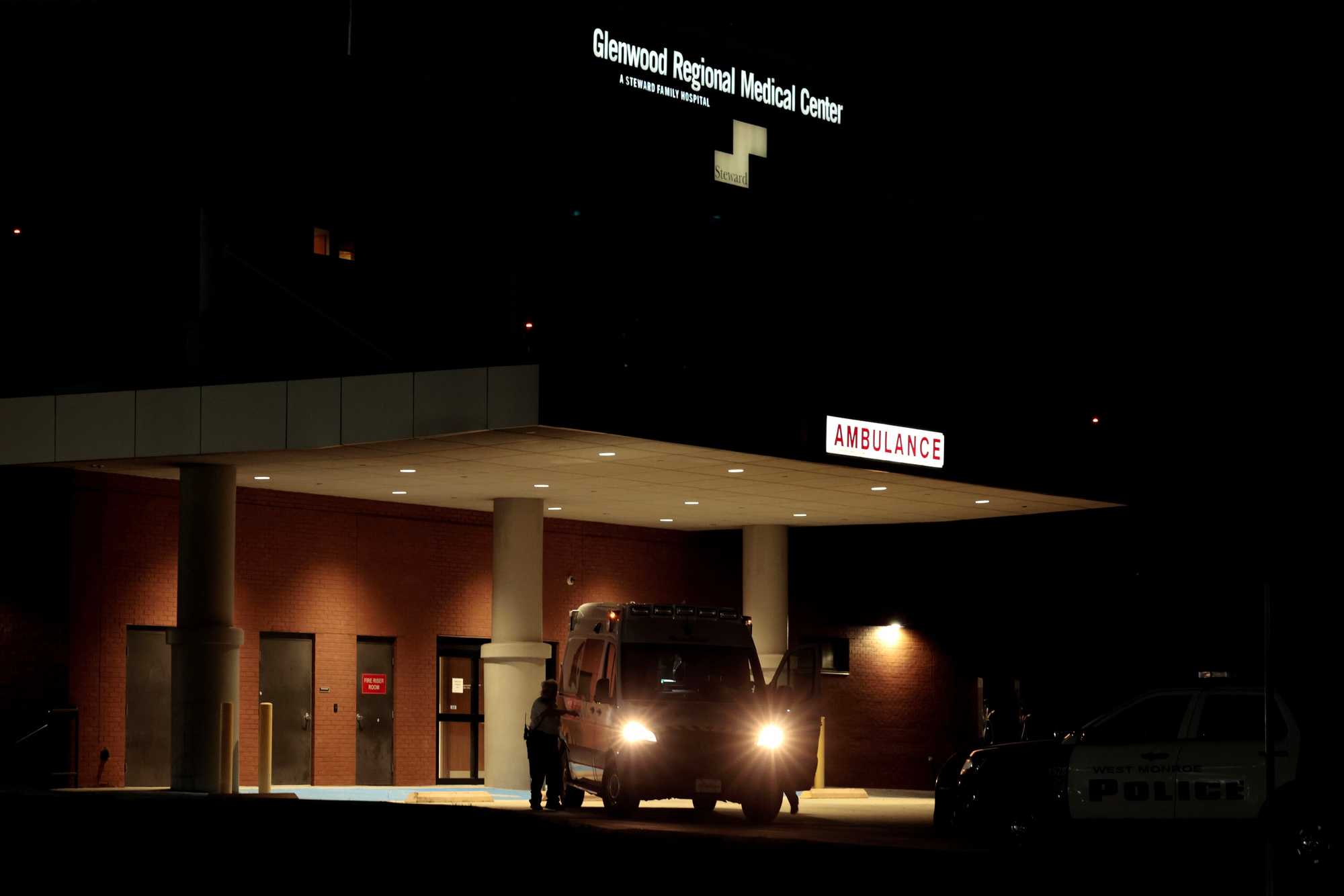
An ambulance idled in the bay at Glenwood Regional Medical Center in West Monroe, La., on Aug. 28, 2024. (Craig F. Walker/Globe Staff)
In September 2017, Steward added facilities in Utah, Arizona, Colorado, Texas, Arkansas, and Louisiana, making the system the largest private for-profit hospital chain in the country.
A hospital deal with the island nation of Malta was the first stop in Steward’s whirlwind international campaign that included plans to partner with Turkey’s strongman president, Recep Tayyip Erdogan.
Just before Christmas in 2017, de la Torre and his second-in-command, Michael Callum, jetted to Rome and enjoyed a tour of the Vatican with two junior employees. The company did not have business at the Vatican, an insider said, though the cost of the trip was billed to Steward.
De la Torre’s spokesman said the Steward executives were in Malta on business, and then stopped in Rome for two days for business meetings.
Upon their arrival at the Vatican, Boston’s own Cardinal Sean O’Malley greeted the group and gave them a tour of St. Peter’s Basilica — along with an endorsement of their work in health care.
“Many people have the misperception that the Catholic hospitals have disappeared from the Archdiocese of Boston,” wrote O’Malley in a blog post that included a photo of the priest with the Steward entourage. “They have simply moved under the ownership of Steward Health … but they continue to fulfill the mission of serving the poor.”
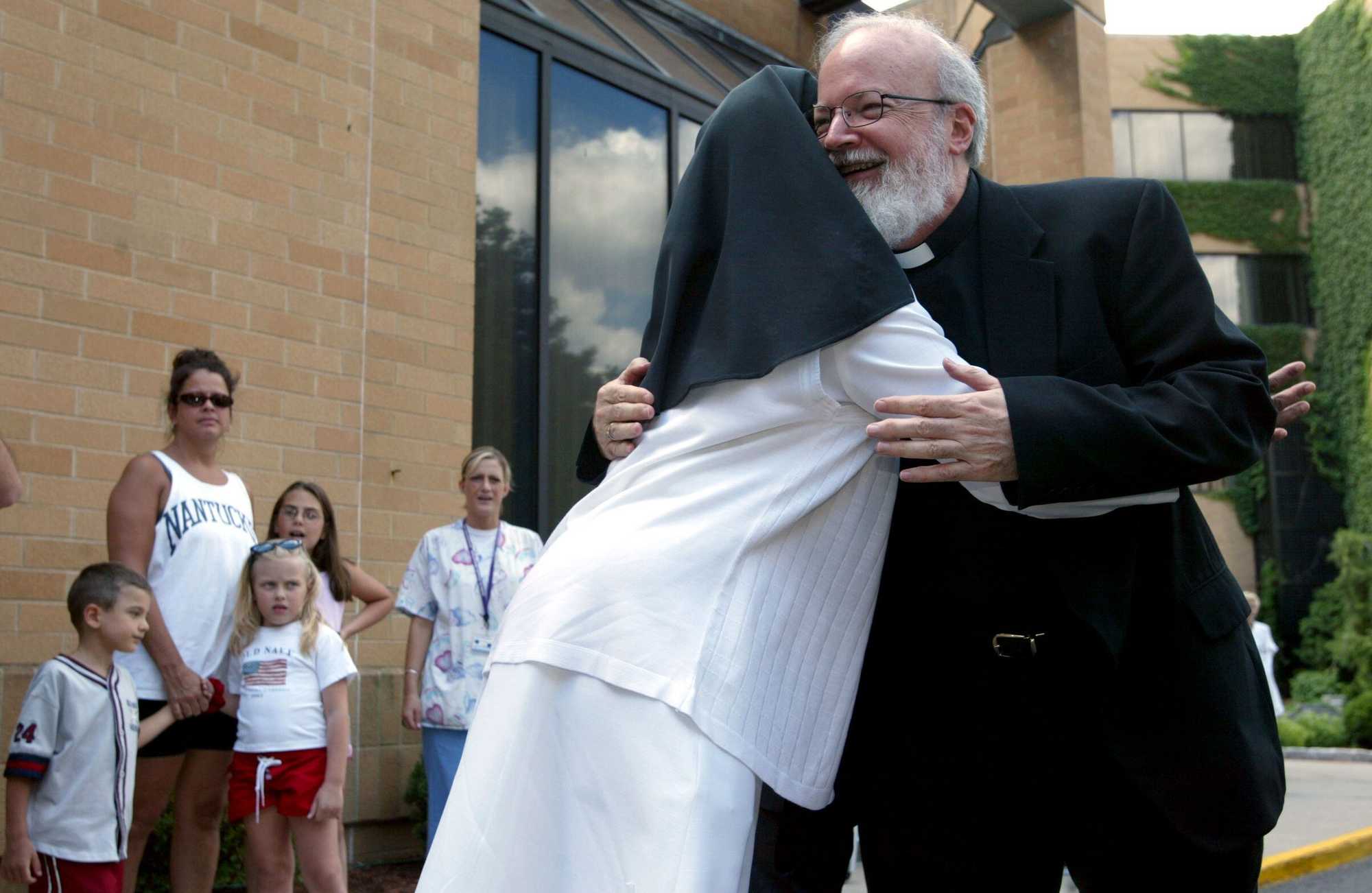
Then-Boston Archbishop Sean Patrick O'Malley was welcomed in July 2003 to St. Elizabeth Medical Center in Brighton by Sister Joanna Fernandes, then chair of the board of trustees at Saint Anne's Hospital. (Dominic Chavez/Globe Staff)
Through 2018, Steward’s stated mission, outlined in annual filings with the Massachusetts secretary of state, seemed aligned with O’Malley’s words. The company existed to “establish and maintain hospitals,” to “carry on scientific research related to the care of the sick and injured” and “promote the general health of the community.”
But the next year marked an official change of heart. All previous mission language was absent, replaced with a simple, declarative sentence: “The company is organized for the purpose of engaging in investment, trading or financing activities of all kinds.”
By their own words, Steward’s leaders were no longer running a health care company, but a financial one.
That self-admitted change in philosophy — with patients no longer at the center of Steward’s universe — was perhaps best encapsulated by the trip company brass took to Vienna in February 2020, ostensibly for a board meeting.
De la Torre took the company’s jet directly from Dallas, where he was met by other top executives. They stayed at the Hotel Sacher Wien, an imperial five-star ode to opulence.
There was little business on their itinerary. The group took a VIP tour of a Gustav Klimt exhibition, and enjoyed a visit to the National Library and a private performance at the Spanish Riding School. The marquee event of the weekend was the Vienna Opera Ball, an annual gala where attendees sip champagne and gaze at young debutantes who waltz about the ballroom.

The Opera Ball at the Vienna State Opera in Vienna, Austria, photographed on Feb. 20, 2020. (Chris Hofer/Getty Images)
In just three days, the Steward executives racked up a bill of roughly $200,000. Every penny of it was billed to Steward Health Care, according to emails and internal expense logs obtained by the Organized Crime and Corruption Reporting Project and shared with the Globe.
De la Torre, in a statement, didn’t offer specifics, but said the trip was “for business purposes related to the work of Steward Health Care International.”
Shortly after the executives got back from Vienna, Steward purchased an even fancier corporate jet, with tiger-striped wood finishes and satin gold plating. The cost: $26.5 million.
The company was spending beyond its means. At headquarters, bills for hospital services were stacking up. Vendors were starting to squawk, occasionally staking out the Steward parking lot to demand payment from hospital leaders. And then in March 2020, the pandemic hit.
Already facing massive debt, Steward was pushed to the limit when elective surgeries — the cash cows of health care — were canceled indefinitely. Looking to offload one of its most unprofitable hospitals, Steward gave the Commonwealth of Pennsylvania an unappetizing offer: Give us $40 million within three days or we’ll close our hospital in Easton, a small city in the Lehigh River valley, eliminating 700 jobs and a key health care facility.
This was what it meant to be a financial firm organized for investment and trading. Steward viewed Easton Hospital as a cash sieve. Steward had been in talks since late 2019 to sell it to St. Luke’s University Health Network, based in Bethlehem, Pa., a nonprofit. Steward has said it told the Pennsylvania Department of Health in January 2020 that the hospital would close by late April if it was not sold by then.
But with the onset of COVID, St. Luke’s tapped the brakes.
Nobody in Easton knew life without the hospital. It had been established in 1890, financed by a public charity drive. Many native Eastonians took their first breath there. Community Health Systems bought Easton in 2001, and then flipped it in 2017 to Steward.
Steward’s bailout request to Governor Tom Wolf, dated March 22, 2020, came 16 days after Wolf declared a state of emergency over COVID. When Pennsylvania officials offered $8 million with stiff conditions, Steward tightened the screws, writing on March 27 that Steward was ready to surrender the operation of Easton to the state that very night: “If the Commonwealth has no interest in assuming all operating expenses and liabilities for Easton Hospital, Steward Health Care will proceed immediately on planning to close the facility.”
Some inside Steward were queasy about the hard-nosed strategy. One insider likened the move to an armed stickup of state officials. “It went beyond callousness,” the former executive said, “it was contempt for the state and the need to step up in a global pandemic.”
Even as the virus ravaged his hospitals across the country, de la Torre found himself with a reason to celebrate in May of 2020.
A $95 bottle of Laurent-Perrier Cuvée Rosé was opened in triumph. And not just opened, but sabered. That is, the top of the bottle, cork and all, had been cleaved off with the stroke of a knife, unleashing a foaming geyser, as Napoleon’s soldiers were known to do.
A photo from the moment, which de la Torre shared by email with another Steward executive, shows two champagne flutes, the decapitated bottle, and a gleaming silver saber. The caption: “Ding dong the witch is dead.”
De la Torre’s day had come. Steward, MPT, and Cerberus had confected a complex deal that was aimed at getting the private equity company out. It allowed de la Torre and his team to acquire Cerberus’s shares in Steward for a $350 million loan.
But de la Torre wasn’t quite free of Cerberus’s restrictions. Until the note was paid, Steward was forbidden from distributing money to its shareholders, the most significant one being de la Torre himself.

In this photo illustration, the logo of Medical Properties Trust, a real estate investment trust that invests in health care facilities, was displayed on a smartphone with an economic stock exchange index graph in the background. (SOPA Images)
He wanted a payday. MPT jumped in to help.
“We think we have a plan,” MPT’s chief financial officer R. Steven Hamner, wrote to de la Torre in an email obtained by the Globe, “and then you are free at last and can take a well-deserved distribution.”
In January 2021, MPT loaned $335 million to Steward executives to help them buy out Cerberus, at a discount. The private equity firm exited Steward with about $800 million in profit, an annual return averaging about 14 percent over 11 years, a healthy but not exceptional amount by private equity standards.
Steward then paid a $111 million cash distribution to its owners. The payment was “advisable and in the best interests of the Company,” according to the confidential Steward document authorizing the distribution. It was signed by de la Torre, the majority owner and the prime beneficiary.
De la Torre received about three-quarters of the payment. MPT, which owned about 10 percent of Steward, got $11 million.
De la Torre’s portion of the distribution was intended to “partially offset Dr. de la Torre’s guarantee” of a $200 million loan from MPT that aimed to recapitalize Steward, which he backed with his stake in the company, he has said through a spokesman.
Advertisement
Amid de la Torre’s new wealth, hospitals in the Steward network struggled. At St. Elizabeth’s Medical Center in Brighton, the elevators, particularly in the labor and delivery unit, rarely worked for much of 2023.
Nurses wheeled critically ill newborns to lifts farther away, manually hand-pumping oxygen into their lungs with each step. A ceiling tile once fell and narrowly missed a baby in a bassinet. Crumbling concrete in the parking garages tripped up nurses. One broke her ankle, another fell and hit her face. It was here, at St. Elizabeth’s, that the staff ran out of bereavement boxes for stillborn infants.

Nabil Haque lost his wife, Sungida Rashid, in October 2023, shortly after she gave birth to their daughter Otindria, shown here at the age of 2 and a half months. Rashid died after suffering postpartum bleeding at St. Elizabeth's Medical Center. Her condition was treatable, but Steward lacked the necessary equipment because it had failed to pay the vendor that supplied it. (Suzanne Kreiter/Globe Staff)
Five Irish women founded St. Elizabeth’s in 1869 in a four-story brownstone tucked into a cramped row of Boston’s South End. The fledgling hospital catered to immigrant women who had lived hard, taxing lives of service for others. The 30 beds were always full.
It was clear a bigger space was needed, something “capable of sheltering whatever poor soul, requiring its aid, may knock on its doors — a blessing to the community and an honor to the city,” wrote Horatio R. Storer in a 19th-century book entitled “Nurses and Nursing.”
A century later, the hospital moved to a 12-building complex in Brighton that saw St. Elizabeth’s become an early pioneer in gynecology. But by 2022, the Brighton property was dangerous and derelict due to deferred upgrades and maintenance.
The grim conditions were the norm for a Steward hospital by 2023. Bats took up residence in the attic of Rockledge Regional Medical Center in Florida. Air conditioning units died during a heat wave in Arizona, sending temperatures in the emergency department into the 90s. Broken radiology equipment, scarce blood banks, and shortage of needles drove one Louisiana doctor to liken conditions to “third world medicine” in a federal inspection report.
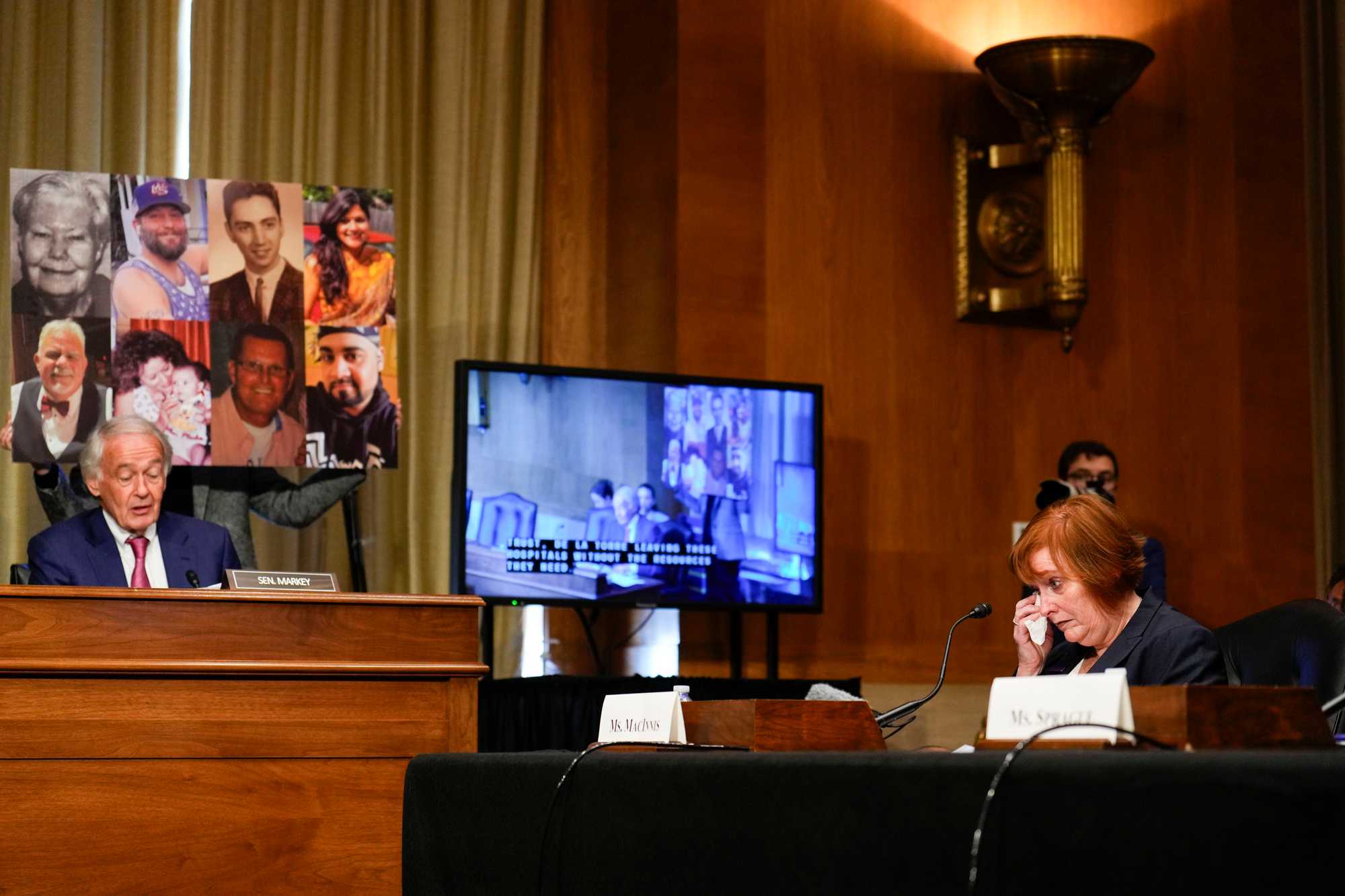
Ellen MacInnis, a nurse at St. Elizabeth’s Medical Center, wiped away tears as Senator Ed Markey spoke about patients that died at Steward-owned hospitals, during a hearing of the US Senate Committee on Health, Education, Labor, & Pensions on Sept. 12, 2024. (Kayla Bartkowski for The Boston Globe)
By May of 2024, Steward owed nearly $1 billion in unpaid bills, $1.2 billion in loans, $290 million in unpaid employee wages and benefits, and $6.6 billion in long-term rent obligations to MPT.
By then, Steward officials had quietly been meeting for months with top Massachusetts health officials to demand help in staving off the seemingly inevitable collapse of the chain. Bankruptcy seemed inevitable. The hospitals would need to be sold or closed.
The executives, who took home hundreds of thousands in bonuses in 2023, came to a humbling realization, as outlined in internal presentations obtained by the Globe.
Perhaps hospitals such as St. Elizabeth’s and Holy Family would be better off under the control of a nonprofit hospital operator?
Steward Health Care officially filed for bankruptcy in May, 14 years after Cerberus made its initial investment. The fallout of Steward’s collapse will be felt for decades to come.
What’s clear today is that de la Torre and his associates ran the system into the rocks and got rich doing it. The ultimate risk of their actions fell on the general public, the health care workers who served in their hospitals, and the patients who sought care in their most vulnerable moments.
Earlier this month, the state of Pennsylvania was faced with yet another Steward ultimatum. Steward demanded the state cough up millions to keep a rural 163-bed hospital afloat. The state declined. The hospital is set to close next week.
Meanwhile, more than 500 outstanding malpractice claims remain unpaid or unsettled after Steward raided the coffers of its in-house insurer. Grievously injured patients await restitution, while doctors foot their own legal bills.
De la Torre, who left Steward in September, has been held in contempt by Congress after not showing up for a September committee hearing on Steward’s demise. But his public shaming seems divorced from the forces that underpinned his rise — a considerable shift in US health care from patients-first to profit-first.

An empty chair reflected the absence of Steward Health Care System CEO Ralph de la Torre at a hearing of the US Senate Committee on Health, Education, Labor, & Pensions on Sept. 12, 2024. De la Torre was ordered to attend but declined to do so. (Kayla Bartkowski For The Boston Globe)
“I wish this were not true, but there are hundreds of Ralph de la Torres who are making a disgusting fortune off of withholding health care from people in need,” said Senator Chris Murphy, a Connecticut Democrat, speaking at a hearing in Washington on the Steward fiasco.
In his own state, Murphy said, a scandal involving Prospect Medical Holdings — another private equity-backed hospital company that also did a huge sale-leaseback deal with MPT — was a near carbon copy of the Steward scandal.
“This is just a choice to decide to commoditize our health care system,” said Murphy. “How have we let American capitalism get so off the rails, so unmoored from the common good?”
It was a rhetorical question.
Steward spent much of this year taking itself apart.
Holy Family, with a campus in Haverhill in addition to the original Methuen location, was bought by Lawrence General Hospital, aided by $165 million in state money.
Sister Glynn, who still has great affection for the hospital, recalled being “very, very sad” when it was sold to Cerberus, because she anticipated hard times under for-profit ownership. “The mission is different than not-for-profit hospitals,” she said. She was pleased to see the hospital emerge from Steward under the control of a nonprofit. “I think it’s the best solution for the provision of health care,” she said recently.
A short drive south, in Dorchester, Steward’s Carney Hospital was deemed unsalvageable. The 161-year-old hospital, established in 1863 with a charitable gift from Irish immigrant Andrew Carney, expired on the morning of Aug. 31.
Anger, sadness, and a deep sense of betrayal swept over the remaining staff that day. Some employees ripped crucifixes from the hospital walls. Others took turns punching and kicking a mannequin in the lobby depicting de la Torre in prison garb.
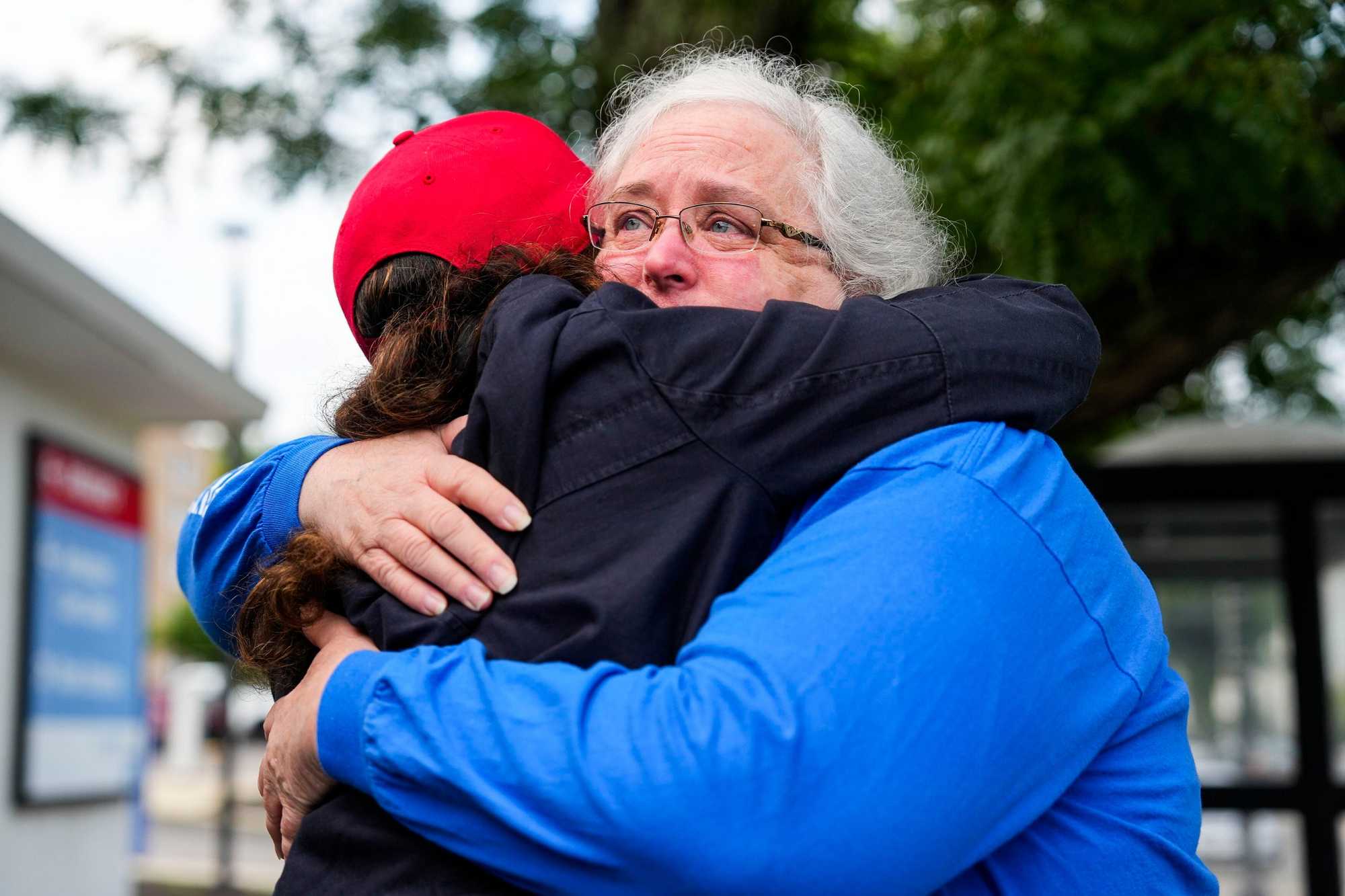
Lead department secretary Maryanne Murphy (right) hugged a friend on Aug. 31, 2024, the day the emergency department at Carney Hospital in Dorchester closed. (Kayla Bartkowski For The Boston Globe)
By dawn, a group of nurses danced to Sister Sledge’s “We Are Family,” blaring from a car stereo outside the ambulance bay on Dorchester Avenue.
Promptly at 7 a.m., closing time, security officer Bob Huxley emerged from behind the automatic doors of the emergency department and yelled, “Last call!” to a crowd of onlookers. He locked the doors and urged anyone who needed emergency medical care to call 911. “To have this happen is an atrocity,” said Huxley, his eyes flooding with tears. “Where are the politicians? Where are people going to go?”
By 8 a.m., the crowd had dispersed. Left in its wake: A handwritten sign that read: “You’ll regret this!”
Mark Arsenault can be reached at [email protected]. Hanna Krueger can be reached at [email protected]
Chris Serres, Rebecca Ostriker, Elizabeth Koh, Jessica Bartlett, and Liz Kowalczyk of the Globe staff contributed to this report. Khadija Sharife of the Organized Crime and Corruption Reporting Project also contributed.
Advertisement
Credits
- Reporters: Mark Arsenault and Hanna Krueger
- Contributors: Chris Serres, Rebecca Ostriker, Elizabeth Koh, Jessica Bartlett, and Liz Kowalczyk of the Globe staff. Khadija Sharife of the Organized Crime and Corruption Reporting Project.
- Editors: Brendan McCarthy, Gordon Russell, Nancy Barnes, and Mark Morrow
- Visual editor: Tim Rasmussen
- Photos: Wendy Maeda, Jessica Rinaldi, John Tlumacki, Craig F. Walker, Mike Stocker, Dominic Chavez, Kayla Bartkowski, Globe wire services
- Director of photography: Bill Greene
- Photo editor: Leanne Burden Seidel and Kevin Martin
- Design: Ashley Borg and John Hancock
- Development: John Hancock
- Digital editor: Christina Prignano
- Copy editor: Mary Creane
- Audience: Cecilia Mazanec
- Audience editor: Heather Ciras
© 2025 Boston Globe Media Partners, LLC